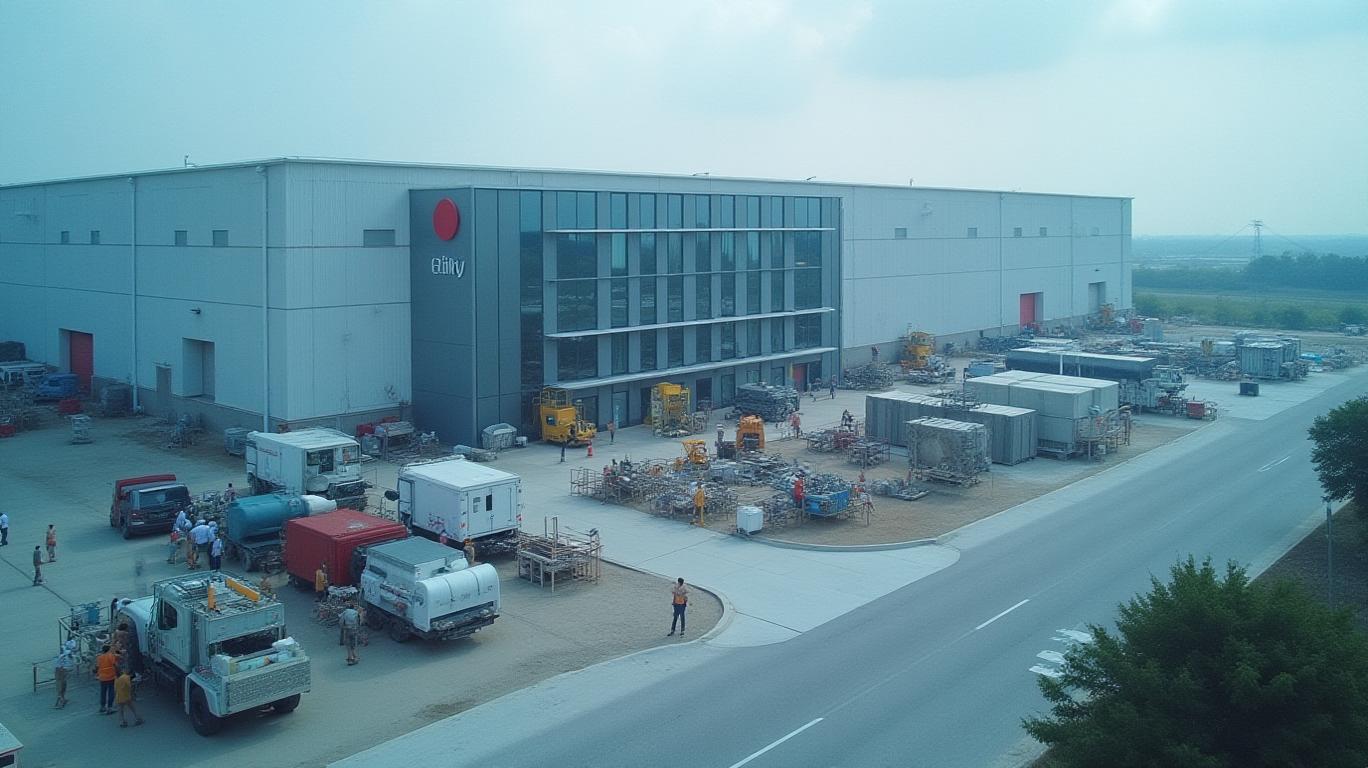Eli Lilly: Navigating Regulatory Crosswinds with Strategic Resilience
In an era of escalating geopolitical and regulatory pressures,
(NYSE: LLY) stands at a critical juncture. While its reliance on Irish manufacturing and exposure to the new Most-Favored-Nation (MFN) pricing policy have raised eyebrows among investors, a deeper analysis reveals a company pivoting decisively toward operational self-reliance and legal defense. For investors willing to look beyond short-term noise, this presents a compelling entry point into a pharma giant primed to dominate post-regulatory consolidation.Strategic Manufacturing: Shielding Against Tariffs
Lilly's $1.8 billion investment in Ireland—bolstering biologic production in Limerick and diabetes/obesity therapies in Kinsale—has been a linchpin of its global supply chain. However, the company is now executing a $27 billion U.S. manufacturing blitz to insulate itself from tariffs and geopolitical volatility. By 2026, four "mega sites" will produce active pharmaceutical ingredients (APIs) and injectables domestically, reducing reliance on Irish imports by over 30%. This pivot addresses two existential threats:
- Tariff Mitigation: The U.S. "tariff wall" strategy, which could impose duties on Irish imports, is being preempted by reshoring critical API production. The Limerick facility's Alzheimer's drug pipeline, for instance, will now complement U.S. capacity.
- Supply Chain Resilience: Post-pandemic shortages highlighted the risks of overconcentration. Lilly's U.S. investments aim to replicate its Irish expertise in biologics and peptides, ensuring continuity for blockbusters like Mounjaro and Zepbound.

The MFN Pricing Policy: Legal Uncertainty as a Buying Catalyst
President Trump's May 2025 MFN executive order, targeting 50-80% price cuts on Medicare drugs, has sent shockwaves through the sector. For Lilly, Jardiance (a $7.1B Medicare diabetes drug) and Imbruvica (leukemia therapy) are direct targets. However, three factors suggest this is a manageable hurdle:
- Legal Headwinds: The policy's legality is deeply contested. A 2020 MFN rule was struck down for overreach, and courts may block this iteration if procedural flaws emerge. Lilly's CEO, Dave Ricks, has already signaled litigation readiness, arguing that simplistic price comparisons ignore rebate structures and global cost dynamics.
- Industry Pushback: Pharmaceutical trade groups (PhRMA, BIO) are mobilizing to delay or dilute the policy. Their arguments—that MFN undermines R&D investment and risks U.S. reliance on foreign drug sources—align with bipartisan concerns about stifling innovation.
- Stock Market Resilience: While LLY dipped 3.8% YTD in May, it rebounded sharply as investors discounted the feasibility of 59-90% price cuts. A would likely show volatility around the order's announcement, but a recovery as skepticism over enforcement grows.
R&D Dominance: The Long-Term Edge
Lilly's $5.4B pre-launch allocation for its obesity drug orforglipron underscores its confidence in future growth. Its pipeline—spanning oncology, neuroscience, and cardiometabolic therapies—remains unmatched. Even if MFN forces moderate price concessions, the company's R&D engine will drive top-line expansion through:
- New Blockbusters: Oraforglipron's potential $4B+ annual sales could offset pricing pressures.
- Patent Walls: Strong IP portfolios for Jardiance (patent expiry 2030) and Imbruvica (2035) delay generic erosion.
Why Buy Now?
The confluence of regulatory uncertainty and manufacturing transformation creates a rare buying opportunity:
- Valuation Discount: LLY trades at 16.2x forward earnings, below its five-year average of 20.5x.
- Short-Term Catalysts: U.S. facility announcements (expected Q3 2025) and MFN litigation outcomes (Q4 2025) could trigger rallies.
- Structural Tailwinds: The U.S. reshoring boom (fueled by tax incentives) positions Lilly to capitalize on bipartisan support for domestic drug production.
Conclusion: Lilly's Resilience Will Outlast the Storm
While the MFN policy and tariff risks loom large, Eli Lilly's proactive strategy—domestic manufacturing scale-up, legal defense coordination, and R&D firepower—positions it to emerge stronger post-regulatory dust-up. Investors who view this period as a valuation reset, rather than a terminal threat, stand to benefit as the market recalibrates to Lilly's long-term strengths. The time to act is now, before the company's operational pivot and pipeline momentum become widely recognized.
Final Call to Action: Consider a gradual build in LLY exposure ahead of Q3 catalysts, targeting a 20%+ upside in 12 months as regulatory overhang lifts.

Comments
No comments yet